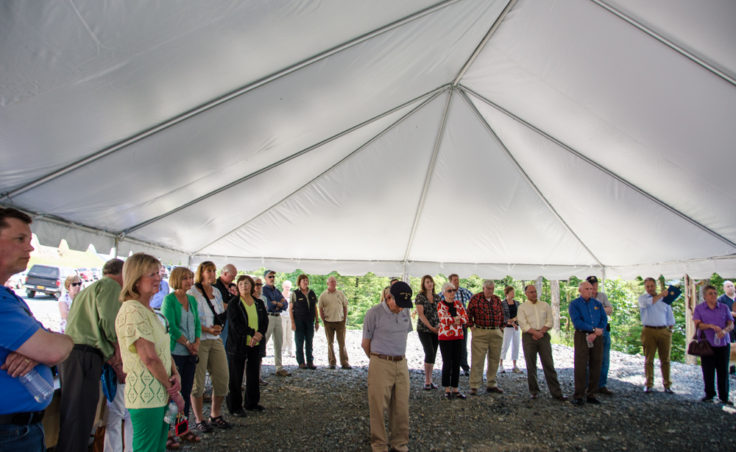Juneau now has three more miles of road.
Gov. Sean Parnell cut the ribbon Monday for the Glacier Highway Extension from Echo Cove to Cascade Point.
The new road started life as a pioneer road when Frank Murkowski was governor; Parnell finished it under the state’s so-called Road to Resources program.
To celebrate the three miles, state transportation officials invited Juneau road supporters, including Mayor Merrill Sanford, Juneau legislators Cathy Munoz and Dennis Egan, and former Rep. Bruce Weyhrauch, who helped get $5 million in the state capital budget in 2006.
The state hired Channel Construction in 2007 to push through the initial 16-foot wide pioneer road.
In 2011, Miller Construction won the contract to build it into the new 26-foot-wide, two-lane road. State highway crews added a chip seal coat last week. The stripes will be painted before the end of the month.
DOT Commissioner Pat Kemp called chip seal a poor-man’s pavement, used in low-volume roads.
“So the incremental cost of this project, including design, is about a million and a half a mile, which is pretty economical these days.”
The three miles crisscross Goldbelt Native Corporation and U.S. Forest Service land. Kemp said the state has worked with the two entities for about 20 years on a road extension. The right-of-way that passes through Goldbelt land was donated by the corporation to DOT.
“You’ll see a ‘entering Forest Service property’ sign then you’ll see, a hundred feet later, you’ll see a sign ‘leaving Forest Service property,’ ” Kemp said. “It’s a saw-tooth property thing.”
Though it was paid for with state funds, the Forest Service required an Environmental Impact Statement for the three miles, which Kemp said antagonized the process.
The gate at the end of the road goes to Goldbelt property.
While DOT officials are careful to say the road extension is not part of the proposed Juneau Access project, Kemp dared to look forward.
“If we’re fortunate to begin construction on the Juneau Access project, and you’re looking at the gate, the road will actually go up the hill a little bit and turn left and head out toward Kensington Mine and up the (Lynn) Canal.”
A supplemental Environmental Impact Statement on Juneau Access, sometimes called the Lynn Canal Highway, is still underway. DOT’s preferred alternative is a 50 mile road from Echo Cove to Katzehin, where motorists would take a shuffle ferry to Haines or Skagway. The SEIS is looking at transportation improvements with the existing ferry system.
Gov. Parnell told the crowd gathered under a tent at the side of the new pavement that the access would create recreational and commercial opportunity.
Goldbelt and Kensington Gold Mine are expected to benefit from the additional three miles.
Giving no specifics, Goldbelt Board chair Katherine Eldemar said the road would enhance the corporation’s potential development.
Kensington General Manager Wayne Zigarlick said the road finally makes a new dock at Cascade Point feasible.
Right now, Kensington work crews commute by shuttle ferry from Yankee Cove to the Berners Bay mine, but the company has always preferred access from Cascade Point.
“This is a project that we’re evaluating as we speak,” Zigarlick said.
In these days of falling metal prices, he said Kensington owner Coeur Alaska is carefully assessing where to put its money, but in the long term, Cascade Point would save money and shave 10 to 15 minutes off the commute.
“We’re a little bit more at the mercy of the weather when we’re out in Lynn Canal and this keeps us out of Lynn Canal so it gives us a little more reliable commute, little bit shorter commute, which ultimately probably leads to lower turnover and obviously turnover costs money.”
Zigarlick was not specific on the cost of building a new terminal at Cascade Point, which would require dredging and a breakwater. He said the proposed facility is designed and the company has been discussing a lease with Goldbelt.

